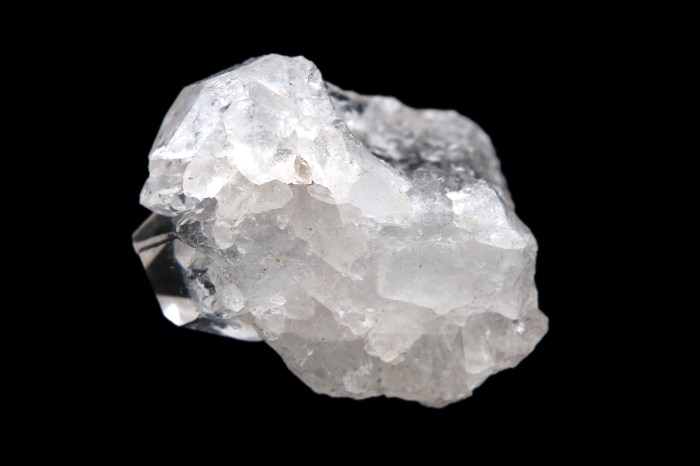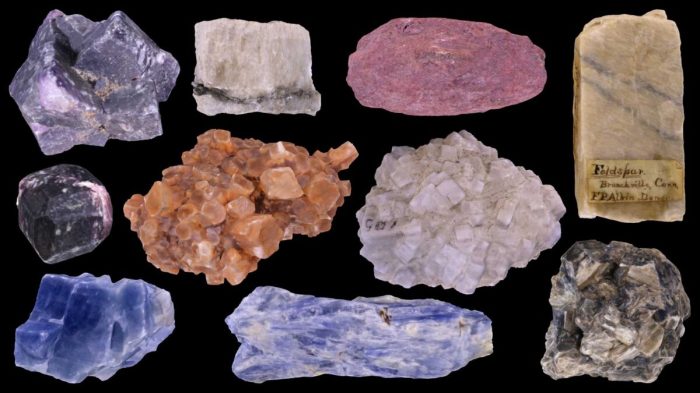Solid inorganic substance 7 letters – Embark on a comprehensive exploration of solid inorganic substances, delving into their defining characteristics, chemical reactions, and diverse applications. This multifaceted guide unravels the intricate world of these substances, providing a thorough understanding of their properties, reactivity, and significance in various industries.
Solid inorganic substances, characterized by their rigid molecular structure and lack of organic components, exhibit a wide range of physical and chemical properties. Their unique characteristics, influenced by their molecular composition, make them essential components in numerous industrial processes and advanced materials.
Physical Properties of Solid Inorganic Substances: Solid Inorganic Substance 7 Letters

Solid inorganic substances exhibit unique physical properties that distinguish them from other states of matter. They possess a definite shape and volume, making them rigid and incompressible. The arrangement of their constituent particles, typically ions or molecules, determines their crystal structure and influences their physical characteristics.
Examples of solid inorganic substances include metals, salts, and minerals. The molecular structure of these substances plays a crucial role in shaping their physical properties, such as melting point, boiling point, and solubility.
Chemical Reactions of Solid Inorganic Substances
Solid inorganic substances can undergo various types of chemical reactions, including:
- Decomposition reactions: Solid inorganic substances break down into simpler substances upon heating or exposure to other conditions.
- Combination reactions: Two or more solid inorganic substances combine to form a new compound.
- Displacement reactions: A more reactive metal displaces a less reactive metal from its compound.
- Redox reactions: Oxidation-reduction reactions involving the transfer of electrons between solid inorganic substances.
The reactivity of solid inorganic substances depends on factors such as their chemical composition, crystal structure, and surface area.
Applications of Solid Inorganic Substances
Solid inorganic substances find applications in diverse industries:
- Construction: Cement, concrete, and bricks are widely used in construction due to their strength and durability.
- Agriculture: Fertilizers, such as ammonium nitrate and potassium chloride, provide essential nutrients for plant growth.
- Electronics: Semiconductors, like silicon and gallium arsenide, are crucial components in electronic devices.
- Pharmaceuticals: Inorganic salts, such as sodium chloride and potassium iodide, are used in various medications.
- Energy storage: Batteries and fuel cells utilize solid inorganic substances as electrodes or electrolytes.
Each application leverages the unique properties of specific solid inorganic substances, highlighting their versatility and importance in modern society.
Synthesis and Characterization of Solid Inorganic Substances, Solid inorganic substance 7 letters
Solid inorganic substances can be synthesized through various methods:
- Precipitation: Dissolving reactants in a solvent and inducing a chemical reaction to form a solid precipitate.
- Hydrothermal synthesis: Using high temperature and pressure in aqueous solutions to crystallize inorganic compounds.
- Solid-state synthesis: Reacting solid reactants at high temperatures to form new solid products.
Characterization techniques help identify and analyze solid inorganic substances:
- X-ray diffraction: Determines the crystal structure and phase composition.
- Scanning electron microscopy: Provides detailed images of surface morphology and elemental composition.
- Thermogravimetric analysis: Measures changes in mass upon heating, revealing thermal stability and decomposition behavior.
These techniques enable researchers to understand the properties and applications of solid inorganic substances.
Advanced Materials Based on Solid Inorganic Substances
Solid inorganic substances have promising applications in advanced materials:
- Nanomaterials: Inorganic nanoparticles exhibit unique optical, electrical, and magnetic properties, making them suitable for applications in electronics, optics, and catalysis.
- High-temperature materials: Ceramics and refractory materials withstand extreme temperatures, finding applications in aerospace, energy production, and industrial processes.
- Biomaterials: Inorganic substances, such as hydroxyapatite, are used in bone implants and tissue engineering due to their biocompatibility and osteoconductivity.
Research in this area continues to explore the potential of solid inorganic substances in developing innovative and functional advanced materials.
User Queries
What are the key physical properties of solid inorganic substances?
Solid inorganic substances are typically hard, brittle, and have high melting points. They exhibit low electrical and thermal conductivity and possess a crystalline structure.
How do solid inorganic substances react chemically?
Solid inorganic substances can undergo various chemical reactions, including decomposition, redox reactions, and acid-base reactions. The reactivity of these substances depends on their composition, surface area, and temperature.
What are the major applications of solid inorganic substances?
Solid inorganic substances find applications in diverse industries, including construction (cement, glass), electronics (semiconductors, insulators), and pharmaceuticals (antacids, pigments).

